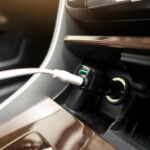When it comes to traveling with our camcorders, it’s essential to be aware of the voltage differences between countries and the potential risks that can arise from not using a voltage converter. This is especially crucial when visiting a country like Italy, where the voltage standards may differ from those in our home country, such as the United States.
In this article, we will explore the importance of voltage converters for camcorders during Italy travel and provide practical tips on selecting and using them effectively.
Italy operates on a standard voltage of 230 volts, whereas the United States typically uses 120 volts. This significant variation in voltage can pose challenges for travelers using electronics like camcorders without proper precautions. Without a voltage converter or transformer, your camcorder may not function optimally or could even get damaged due to the mismatched electrical supply.
The potential risks of not using a voltage converter during Italy travel cannot be overlooked. The difference in voltage can cause overheating or power surge issues, leading to irreversible damage to your valuable camcorder.
Additionally, without the correct power supply, your camcorder may not charge properly or run out of battery quickly, hindering your ability to capture those memorable moments during your trip. Thus, equipping yourself with a suitable voltage converter becomes crucial to ensuring hassle-free use of your camcorder in Italy.
Understanding the Voltage Difference
Italy, like many other countries, operates on a different voltage standard than the United States. While the U.S. uses a voltage of 110-120 volts, Italy uses a higher voltage of 220-240 volts. This difference in voltage can pose a challenge for travelers who want to use their camcorders or other electronic devices while visiting Italy.
The variation in voltage standards between countries is due to differences in electrical infrastructure and regulations. It is important for travelers to understand these differences and take appropriate precautions to ensure the safe and proper functioning of their camcorders.
Using an electronic device designed for a lower voltage in a country with a higher voltage can result in damage to the device or even pose a safety risk. Without a proper voltage converter, the increased voltage can cause the device’s circuitry to overload, leading to malfunctions or permanent damage.
To avoid such risks, it is essential for travelers to use a voltage converter when using their camcorders or any other electronic devices in Italy. A voltage converter will step down the higher voltage used in Italy to match the lower voltage requirement of your camcorder from the United States.
| Country | Voltage Standard (Volts) |
|---|---|
| United States | 110-120 |
| Italy | 220-240 |
| United Kingdom | 230 |
| Australia | 230/240 |
Understanding these variations in voltage standards is crucial in order to protect your camcorder and guarantee its optimum performance when using it abroad.
The Potential Risks
When traveling with camcorders to Italy, it is essential to understand the potential risks of not using a voltage converter. One of the main reasons for this is the difference in voltage standards between countries. In the United States, the standard voltage is 120 volts, while in Italy, it is 230 volts. This significant difference can pose various risks to your camcorder and even your personal safety.
The first risk of not using a voltage converter is damaging your camcorder. Without a proper converter, the higher voltage in Italy can overload the electrical circuits of your camcorder, causing it to malfunction or even get permanently damaged. The cost of repairing or replacing a camcorder due to electrical damage can be significant, so investing in a voltage converter becomes crucial.
Not using a voltage converter can also create safety hazards. Overloading your camcorder’s circuitry can lead to short circuits or overheating, increasing the risk of fire or electric shock. It’s important to note that these risks are not only limited to your camcorder but also extend to other electronic devices you may be carrying with you.
To avoid these potential risks, it is essential to use a voltage converter specifically designed for camcorders when traveling to Italy or any other country with different voltage standards. A voltage converter will ensure that the electricity supplied to your camcorder matches its required specifications, preventing any potential damage or safety hazards.
Compatibility Factors
When traveling to Italy with a camcorder, it is essential to understand the compatibility factors of your device with different voltage standards. Countries like Italy often have different voltage standards compared to places like the United States. These differences can pose risks and potential damage to your camcorder if not properly addressed.
One important factor to consider is the power requirements of your camcorder. Some camcorders are designed to be compatible with multiple voltage standards, while others may only work within a specific range. It is crucial to check the specifications of your camcorder and verify its compatibility with the voltage standard in Italy.
Additionally, you should also consider whether or not your camcorder has a built-in voltage converter. Some newer models are equipped with a universal power supply that can automatically adjust to different voltages, eliminating the need for an external converter. However, not all camcorders have this feature, so it is important to double-check before traveling.
If your camcorder is not compatible with the voltage standard in Italy or does not have a built-in converter, using a separate voltage converter becomes necessary. A voltage converter will allow you to safely use your camcorder by converting the electrical current from one standard to another. There are various types of converters available, ranging from simple plug adapters to more sophisticated transformers that can handle higher watts.
To ensure you select the right type of voltage converter for your needs, it is crucial to research and understand the power requirements of your camcorder beforehand. Some key considerations include wattage capacity, input/output voltage compatibility, and plug type compatibility. Using an incompatible or inadequate converter can result in damage or malfunctioning of both your camcorder and the converter itself.
Ultimately, checking the compatibility factors of your camcorder with different voltage standards is crucial when traveling with a camcorder in Italy. Whether it be through built-in features or external converters, ensuring proper compatibility will help protect your camcorder and allow for hassle-free recording of your cherished moments in Italy.
Exploring Alternatives
Traveling with a camcorder to a different country like Italy can present challenges when it comes to power compatibility. While using a voltage converter is the most common solution, exploring alternative power solutions for camcorders can also be considered. It is essential to evaluate these alternatives, such as battery packs or portable chargers, to ensure uninterrupted usage of your camcorder during your travels.
One alternative power solution for camcorders is using battery packs. These are portable external batteries that can provide extended power supply to your camcorder. They come in various capacities and can be recharged multiple times, making them suitable for long-duration filming sessions or situations where access to a power outlet may be limited. Battery packs are also lightweight and compact, making them convenient for travel.
Another alternative solution is using portable chargers. These devices are particularly useful if you have access to electricity but do not want to rely on traditional power outlets. Portable chargers can recharge your camcorder’s battery directly through a USB connection, eliminating the need for a voltage converter or specific outlet adapters. They are compact and easily fit into your camera bag or pocket, allowing you to charge your camcorder on the go.
Exploring these alternative power solutions provides flexibility and convenience when traveling with a camcorder in Italy. However, it is important to note that these solutions may have limitations in terms of their capacity and longevity compared to using direct voltage converters. Therefore, it is crucial to consider factors such as the duration of your filming needs and availability of charging opportunities while evaluating these alternatives.
| Alternative Power Solution | Advantages | Disadvantages |
|---|---|---|
| Battery Packs | – Provides extended power supply
| – Limited capacity
|
| Portable Chargers | – Convenient for on-the-go charging
| – Capacity may not be sufficient for long filming sessions
|
The Benefits of Voltage Converters
Convenience
One of the major benefits of using voltage converters for camcorders during Italy travel is the convenience they provide. Voltage converters are designed to be portable and easy to use, making them a practical solution for travelers.
Many voltage converters are compact and lightweight, allowing them to be easily packed in a suitcase or camera bag. Additionally, most voltage converters have a plug that can be used with multiple types of outlets, so travelers do not need to worry about finding the right adapter for each location.
Protection
Voltage converters also offer protection for your camcorder during Italy travel. The differences in voltage standards between countries can put electronic devices at risk if they are not properly adapted. Using a camcorder without a voltage converter in Italy could result in damage to the device’s internal components, such as the power supply or circuit board. Voltage converters help regulate the electrical current, ensuring that your camcorder receives the correct amount of power and protecting it from potential harm.
Compatibility
Another advantage of using voltage converters is their compatibility with different types of camcorders. Voltage converters are typically designed to work with various brands and models of camcorders, making them suitable for a wide range of devices. Whether you have a professional-grade camcorder or a compact handheld one, chances are there is a voltage converter that will be compatible with your device.
Practical Tips for Travelers
When traveling to Italy with a camcorder, it is essential to understand how to select and use a voltage converter effectively. Failure to do so can result in damage to your device or even personal injury. This section will provide practical tips for travelers on selecting and using a voltage converter for camcorders in Italy.
Research the Voltage Standards
Before selecting a voltage converter, it is crucial to research the voltage standards in Italy. Italy operates on a 230-volt system, while countries like the United States typically use a 120-volt system. Therefore, your camcorder from the United States may not function properly without a voltage converter in Italy. Make sure you understand this difference and verify the specific requirements for your camcorder before purchasing a converter.
Choose the Right Voltage Converter
Selecting the correct voltage converter is essential to ensure compatibility with your camcorder and other electronic devices. There are two main types of converters: step-up converters and step-down converters. Step-up converters increase the voltage output from 120 volts (or lower) to 230 volts, which is suitable for using European devices in countries like the United States.
On the other hand, step-down converters decrease the voltage output from 230 volts (or higher) to 120 volts, allowing European devices to be used in countries like the United States. For traveling from the United States to Italy with a camcorder, you would need a step-down converter.
Consider Power Adapters
In addition to purchasing a voltage converter, it is also necessary to have power adapters that fit Italian outlets. Italian outlets have different plug types compared to those found in the United States. Investing in universal power adapters will allow you to connect your voltage converter and camcorder safely without any compatibility issues.
Remember that using any electrical device requires caution, and this includes using a voltage converter. Ensure that you follow the manufacturer’s instructions when using your converter to prevent any accidents or damage. It is also advisable to research and purchase a high-quality converter from reputable brands to ensure reliability and safety during your travels in Italy.
Case Studies
Many travelers have shared their experiences of using voltage converters for camcorders during their trips to Italy. These real-life stories can provide valuable insights into the importance and practicality of using voltage converters.
One traveler, Sarah, had initially overlooked the need for a voltage converter and plugged her camcorder directly into a power outlet in Italy. To her surprise, the camcorder immediately stopped working due to the difference in voltage standards. Luckily, she was able to find a nearby electronics store where she purchased a voltage converter, allowing her to continue capturing memories on her trip.
Another traveler, John, decided to invest in a universal voltage converter before his trip to Italy. He found it incredibly useful as he could easily switch between different voltages based on his destination country. Having the converter gave him peace of mind knowing that his camcorder would work flawlessly without any risks.
These case studies highlight the importance of being prepared and having a voltage converter when traveling with camcorders in Italy. It is crucial to check the specific voltage and frequency requirements of your camcorder before traveling to ensure compatibility. By learning from the experiences of other travelers, you can avoid potential risks and enjoy uninterrupted filming during your trip.
Planning Ahead
Planning ahead is crucial when it comes to traveling with a camcorder to Italy. To ensure a smooth and hassle-free experience, it is essential for travelers to have a checklist in place to ensure they have all the necessary equipment for camcorder use in Italy.
First and foremost, it is important to invest in a reliable voltage converter. As discussed earlier, the variation in voltage standards between countries like Italy and the United States can pose potential risks if not addressed properly. Having a voltage converter will allow you to safely use your camcorder without any damage or malfunctions caused by incompatible voltages.
Additionally, it is crucial to check the compatibility of your camcorder with different voltage standards. Some camcorders may already be equipped with built-in converters or have dual voltage capabilities, eliminating the need for external converters. By understanding the specific requirements of your camcorder and ensuring its compatibility, you can avoid unnecessary expenses and streamline your travel preparations.
Exploring alternative power solutions such as battery packs or portable chargers can also provide additional convenience during your travel. These options serve as backup power sources and can be extremely useful when access to electrical outlets is limited or unavailable. They provide flexibility and peace of mind, particularly during outdoor activities or extended periods away from charging stations.
By planning ahead and following these practical tips, travelers can ensure they have everything they need to use their camcorders effectively in Italy. Whether capturing moments of breathtaking landscapes or recording precious memories with loved ones, having the necessary equipment will make your Italian adventure even more memorable.
Remember to take into account the voltage difference, explore alternative power solutions if needed, and always double-check compatibility before embarking on your journey. With proper preparation, you can enjoy every moment while documenting your experiences with ease and peace of mind.
Frequently Asked Questions
Is a voltage converter needed in Italy?
In Italy, a voltage converter may or may not be needed, depending on the specific devices you plan to use. Italy operates on a standard electrical voltage of 230 volts, with a frequency of 50 Hertz.
If your devices are designed to operate within this voltage range and are compatible with the European plug type (two round pins), then you will not require a voltage converter. However, if your devices are only designed for lower voltages, such as those commonly used in North America (110-120 volts), then a voltage converter would be necessary to avoid damaging your electronic equipment.
Do I need an adapter and converter to travel in Italy?
When traveling in Italy, you will likely need both an adapter and converter depending on the electrical characteristics of your devices. An adapter is needed because Italy uses a different type of plug than many other countries. The plugs in Italy have two round pins, while some countries use different plug types like flat blades or rectangular pins.
Therefore, an adapter is necessary to physically fit your device into the Italian power outlets. Additionally, if your devices are not designed to work with the higher voltage and frequency used in Europe (230 volts, 50 Hertz), you will also need a voltage converter to ensure they function properly and do not get damaged.
What devices need a voltage converter in Europe?
Devices that typically require a voltage converter when used in Europe include appliances that are specifically designed for lower voltages, such as hair dryers, curling irons, electric shavers, and similar products commonly found in bathrooms. These smaller personal care electronics often operate at lower voltages (around 110-120 volts) and using them directly with European power outlets without a voltage converter can cause overheating or permanent damage.
It’s always advisable to check the label or specifications of your devices before traveling to determine if they can handle the European voltages; otherwise, investing in a reliable voltage converter is recommended for safe operation abroad.

I’m a passionate traveler, writer, and Italophile. My fascination with Italy’s history, art, and culture has led me on countless adventures across the Italian landscape. Through “I Live Italy,” I share my love for this extraordinary country and aims to inspire others to explore its boundless beauty.





